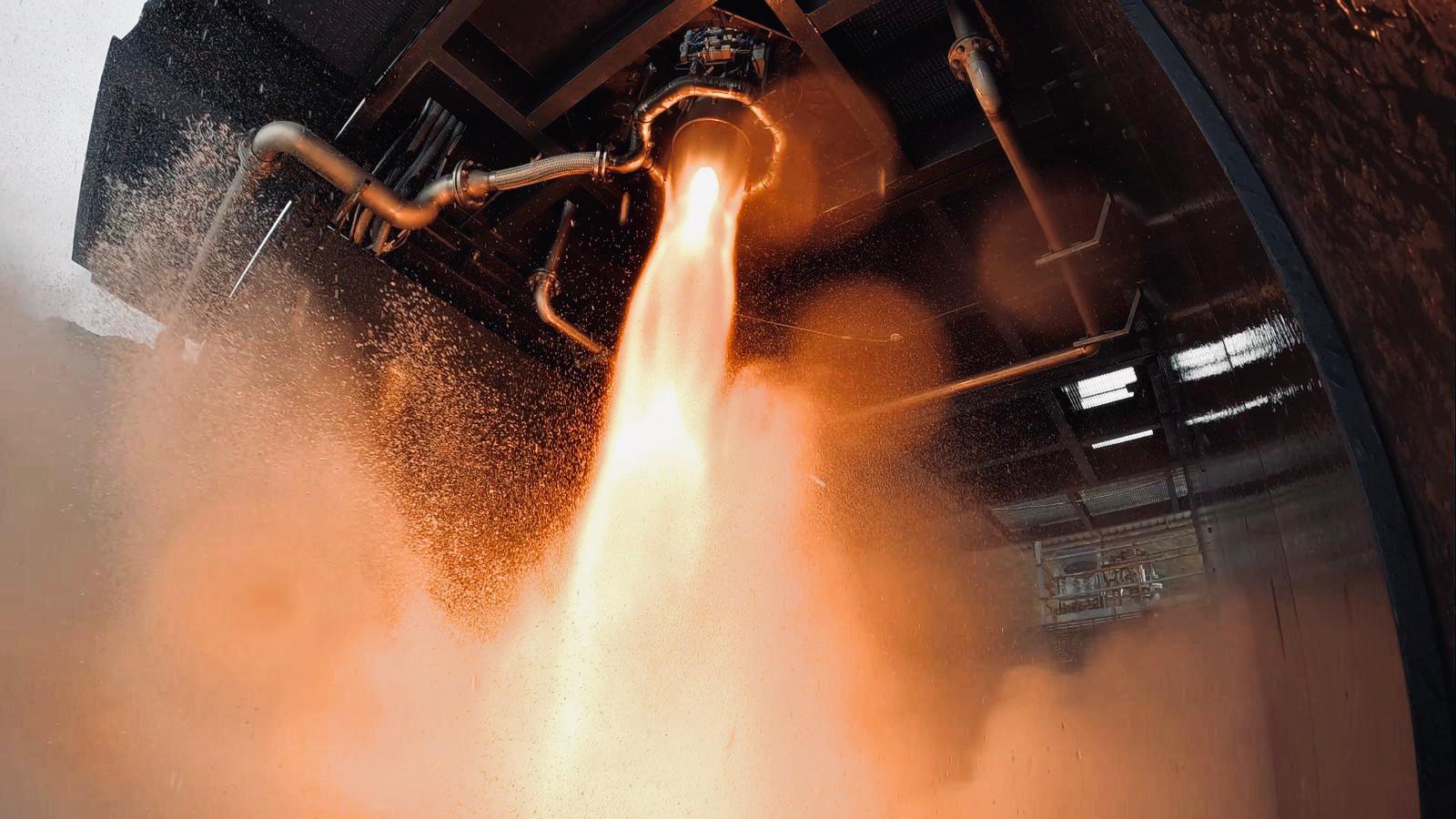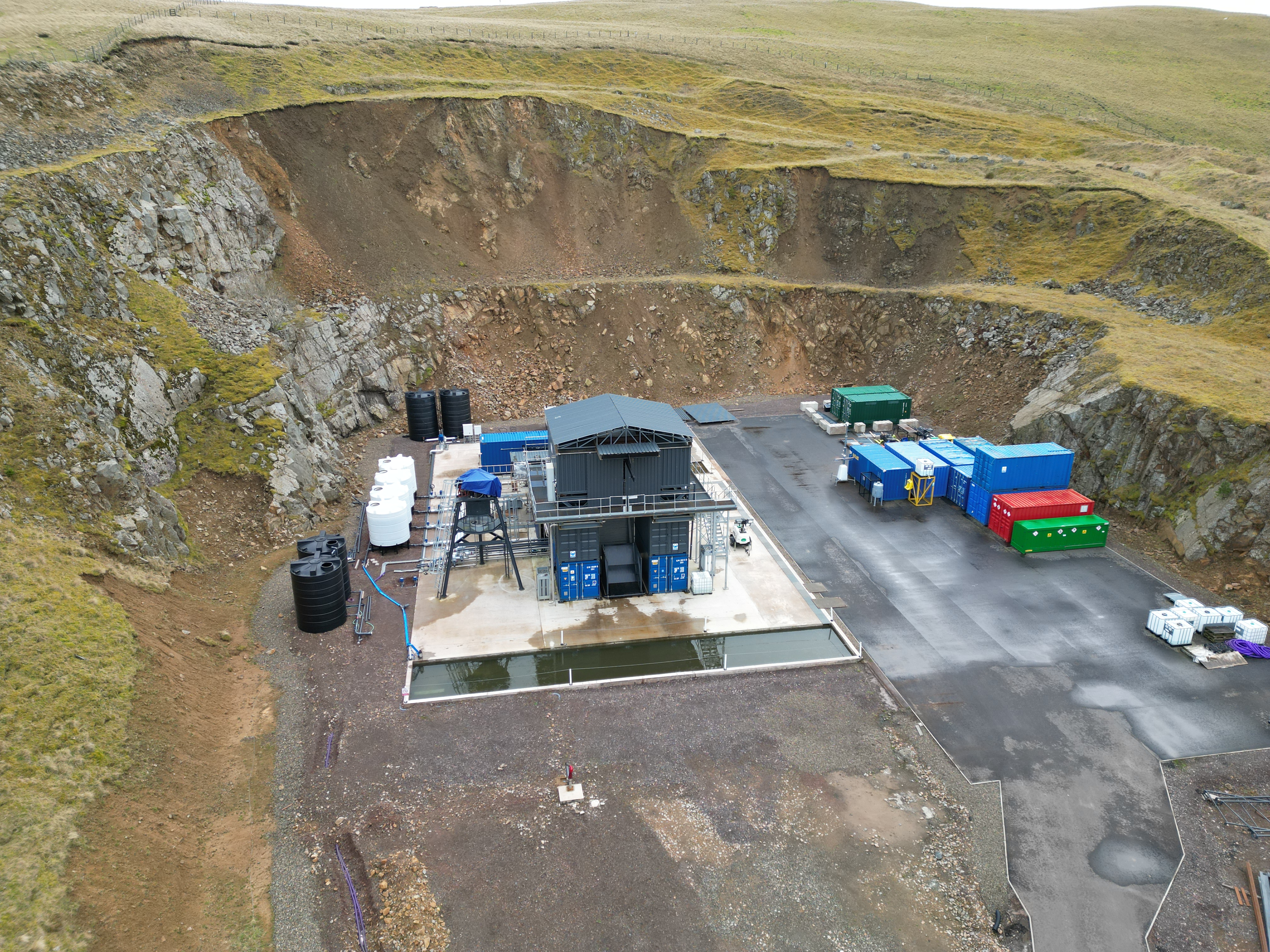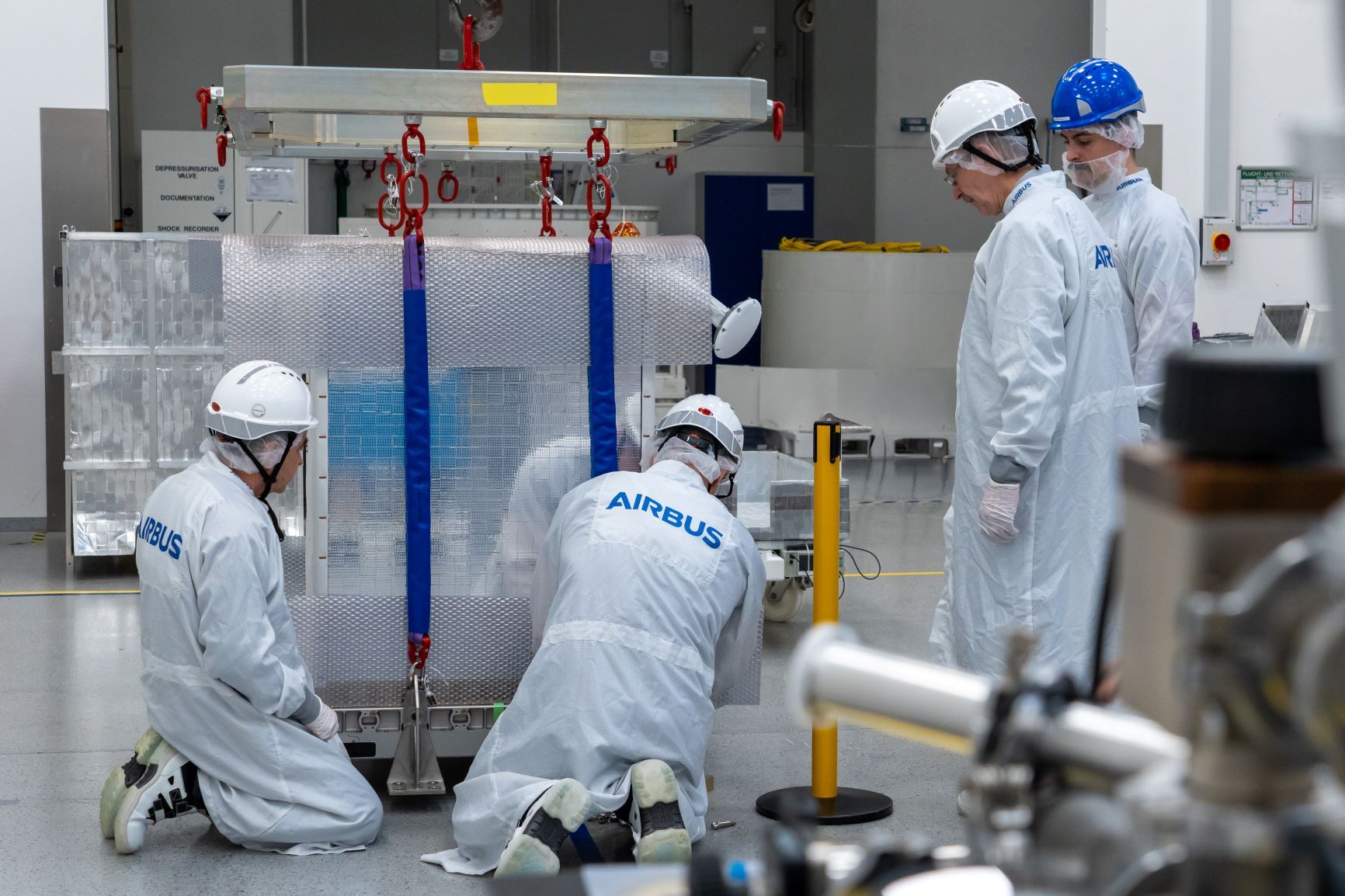Skyrora 3D prints and tests new orbital engine to prepare for launch

Image courtesy Skyrora
The engines have been 3D printed by using Skyrora’s Skyprint 2 machine for the first time, halving the production time and reducing costs.
The new engine design features an improved engine cooling chamber to increase the efficiency of the cooling process and, in turn, extend the engine’s life cycle. Compared to the original model, Skyrora’s 70 kN engines can now be manufactured approximately 66% faster at a 20% cost reduction.
The engine tests will evaluate various parameters including life cycle and full operational envelope testing while the engine runs for 250 seconds, the same amount of time that it will run in a real mission to reach orbit. A successful test will be indicated by nominal chamber pressures and thrust levels with no damage to the hardware. A test article iteration consisting of data analysis, design adjustments and manufacturing can be completed in approximately three weeks.
Upon qualification, the updated 70 kN engine will become the first ever commercial engine to use a closed-cycle staged combustion system run on a propellant combination of Hydrogen Peroxide and Kerosene. While it has not been used historically due to its complexity, the higher specific impulse generated through this design will increase the overall efficiency of the engine.

Taking place at Skyrora’s test site in Midlothian, Scotland, the largest of its kind in the UK, the trials will be overseen by the company’s team of experts every week into the summer.
The successful completion of this series of tests will mark a key milestone within the company’s contract under the European Space Agency (ESA)’s Commercial Space Transportation Services and Support Programme.
CEO and Founder Volodymyr Levykin said: “The new models of 3D printed engines are bringing Skyrora closer towards efficient commercial orbital launch. With our purpose-built rocket manufacturing and testing facilities in Scotland, we are proud to be localising as much of the launch value chain as possible.
"The new engine technology developed by Skyrora’s engineers and the commitment to a sustainable design are a testament to the innovation taking place in the UK space sector.”
With further support from ESA’s Boost! programme, the updated engine design was fully developed via Skyrora’s in-house additive manufacturing capabilities and will act as a critical component on the first and second stages of Skyrora’s XL orbital vehicle. A collaboration with the National Manufacturing Institute of Scotland (NMIS) will qualify the machine,
materials, and process of machining for Skyprint 2. These qualifications will enable Skyprint 2 to be used by third parties commercially, further diversifying Skyrora’s commercial offering within the new space market.
Jorgen Bru, Commercial Services Manager at the European Space Agency, said: “Skyrora is making important progress towards the 70kN engine qualification, which is one of the key objectives of the pre-commercial launch service development activities supported by ESA's Boost! programme. ESA is continuing to support Skyrora along the way to offer new commercial launch services for the benefit of a competitive space sector in Europe."
Once qualified, Skyrora will be able to scale up production and increase engine production rate. Upon completion of the engine qualification programme, Skyrora plans to build a series of production engines to test the full first stage of Skyrora XL, the final stage to be tested prior to a demo orbital launch. The company has already successfully tested the third and second stages of the vehicle in 2020 and 2022 respectively, with the recent second stage test being the largest of its kind to be conducted in the UK in half a century.
Alongside engine qualification, Skyrora has been working closely with the Civil Aviation Authority (CAA) to progress their orbital launch vehicle licence application which they submitted last year, recently hosting the board at Skyrora’s engine manufacturing facility just outside of Glasgow. Upon approval, the licence will enable Skyrora to commence commercial launch operations from SaxaVord Spaceport in the Shetland Isles.
Skyrora’s Head of Engineering, Dr Jack James Marlow, said: “We’re coming very close to finalising our engine qualification programme after a long journey of technical progress, which will be a massive success for the team. This is a key milestone which will qualify one of the main subsystems of our orbital launch vehicle to the correct standards for commercial operations, and as such, is a significant step in the journey to orbital launch. This progress would not be possible without the hard work of the team, who have done an amazing job enabling rapid fire testing.”
Dr Paul Bate, Chief Executive of the UK Space Agency, said: “It’s impressive to see how innovative British-based companies such as Skyrora are using UK Space Agency funding to develop sector-leading technologies. The new 3D printed engines are setting new standards in cost-effective sustainable design and manufacturing efficiency. While sustainability remains a complex challenge, it also presents a significant opportunity for the UK to catalyse future innovations, creating commercial opportunities and strengthening the UK’s global position in the space sector.”













